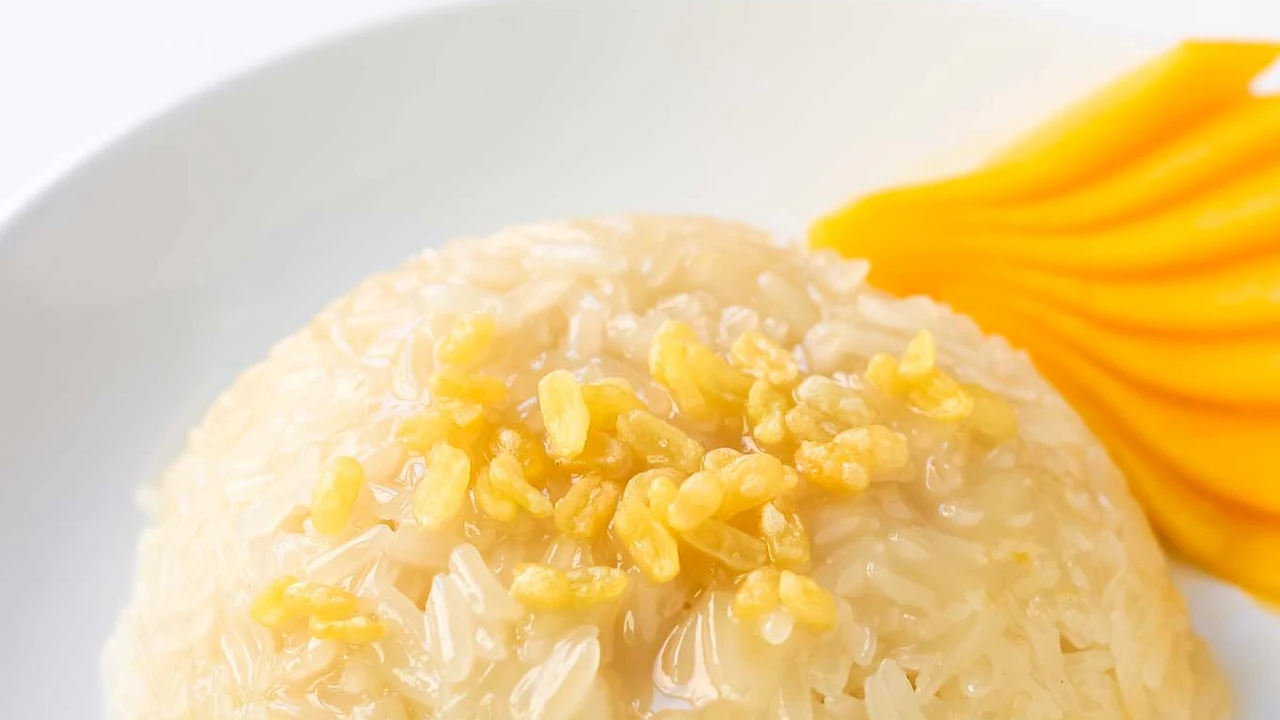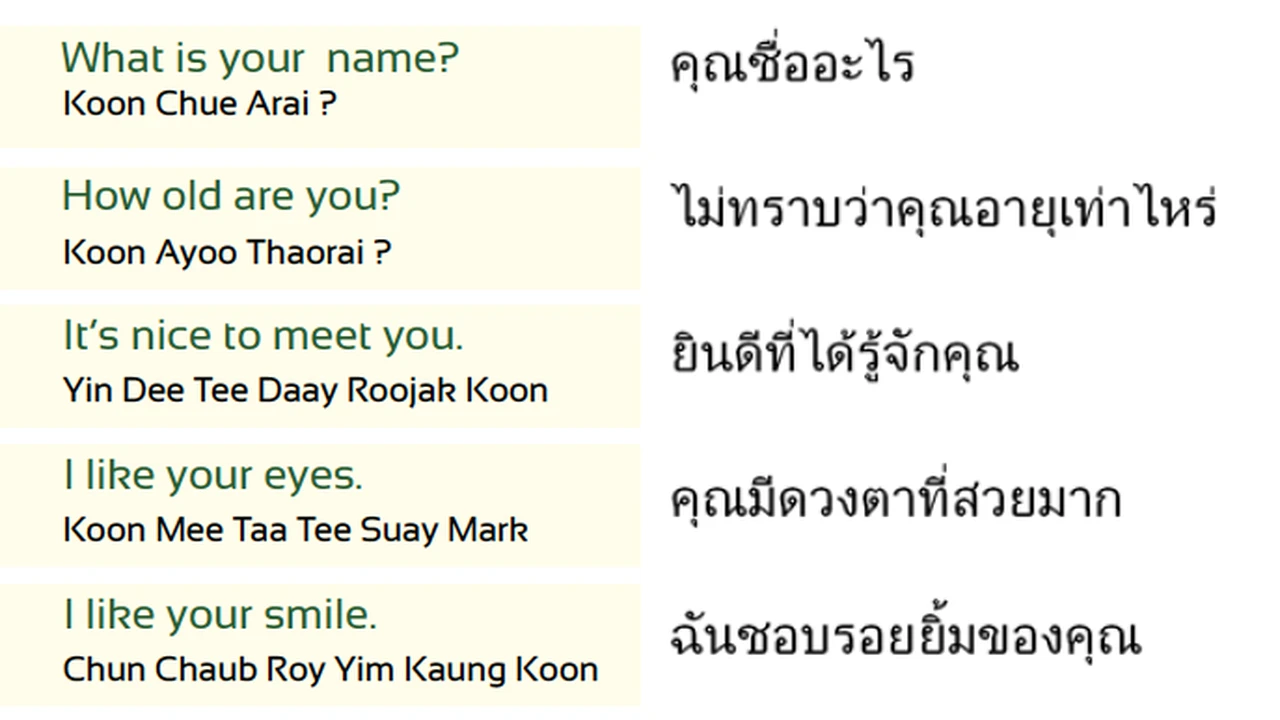Mango Sticky Rice: The Ultimate Thai Dessert

A Tropical Delight Mango Sticky Rice History and Origins
Okay, let's talk about mango sticky rice. Seriously, have you ever tried it? If not, you're missing out on one of life's greatest pleasures. This isn't just a dessert; it's an experience. A symphony of sweet, creamy, and slightly salty flavors that will transport you straight to a sunny beach in Thailand. But where did this magical combination come from?
Mango sticky rice, known as "khao niao mamuang" in Thai, has a surprisingly long history. While pinpointing the exact origin is tricky, it's believed to have evolved from simple rice-based desserts enjoyed throughout Southeast Asia. The key ingredients – glutinous rice, coconut milk, and ripe mango – have been staples in the region for centuries. Over time, the dish was refined, incorporating different variations and regional specialties. Today, it's a beloved street food and a restaurant staple, enjoyed by locals and tourists alike.
The beauty of mango sticky rice lies in its simplicity. It's a dish that celebrates the natural flavors of its ingredients. The sticky rice, cooked to perfection, provides a slightly chewy and satisfying base. The coconut milk, rich and creamy, adds a luxurious texture and subtle sweetness. And the mango? Oh, the mango! Ripe, juicy, and bursting with tropical flavor, it's the star of the show. Together, these three elements create a harmonious blend that's simply irresistible.
Selecting the Perfect Mango for Your Sticky Rice Adventure Mango Varieties and Ripeness
Choosing the right mango is crucial for making amazing mango sticky rice. You can't just grab any old mango off the shelf and expect it to work. You need to find a mango that's perfectly ripe, sweet, and fragrant. Here are a few tips to help you pick the best mango for your sticky rice adventure:
- Look for the right variety: In Thailand, the most popular mango varieties for sticky rice are Nam Dok Mai and Okrong. These mangoes are known for their sweetness, smooth texture, and vibrant yellow color. However, depending on where you live, you might not be able to find these specific varieties. Don't worry, there are other options! Look for mangoes that are labeled as "honey mangoes" or "ataulfo mangoes." These varieties are generally sweet and have a similar texture to Thai mangoes.
- Check for ripeness: The best way to tell if a mango is ripe is to gently squeeze it. It should give slightly to pressure, but not be too soft. You can also check the smell. A ripe mango will have a sweet, fruity aroma near the stem. Avoid mangoes that are rock hard or have bruises.
- Consider the color: While color isn't always the best indicator of ripeness, it can give you a general idea. Look for mangoes that have a vibrant yellow or orange color. Avoid mangoes that are mostly green, as they are likely underripe.
Mastering the Sticky Rice The Art of Cooking Glutinous Rice
The sticky rice is just as important as the mango in mango sticky rice. It needs to be cooked perfectly – soft, slightly chewy, and not too mushy. Here's a step-by-step guide to mastering the art of cooking glutinous rice:
- Soak the rice: Rinse the glutinous rice under cold water until the water runs clear. Then, soak the rice in cold water for at least 4 hours, or preferably overnight. This will help the rice cook evenly and become nice and sticky.
- Steam the rice: Traditionally, glutinous rice is steamed in a bamboo steamer. If you don't have a bamboo steamer, you can use a metal steamer. Line the steamer with cheesecloth or parchment paper to prevent the rice from sticking. Drain the soaked rice and spread it evenly in the steamer. Steam over medium heat for about 20-25 minutes, or until the rice is cooked through and tender.
- Fluff the rice: Once the rice is cooked, fluff it with a fork to separate the grains. This will help it cool down and prevent it from becoming too sticky.
Coconut Cream Dream The Secrets to a Perfect Coconut Milk Sauce
The coconut milk sauce is what brings everything together in mango sticky rice. It adds richness, creaminess, and a subtle sweetness that complements the mango and sticky rice perfectly. Here's how to make a perfect coconut milk sauce:
- Use good quality coconut milk: The quality of your coconut milk will have a big impact on the flavor of your sauce. Look for coconut milk that is thick and creamy, with a rich coconut flavor. Avoid coconut milk that is watery or has a metallic taste. Full-fat coconut milk is generally preferred for its richer flavor and texture.
- Add a touch of salt: A pinch of salt is essential for balancing the sweetness of the coconut milk and mango. Don't be afraid to experiment with the amount of salt to find the perfect balance for your taste.
- Sweeten it up (optional): If you like your coconut milk sauce extra sweet, you can add a little bit of sugar or palm sugar. Start with a small amount and add more to taste.
- Thicken it up (optional): If you want a thicker sauce, you can add a cornstarch slurry (cornstarch mixed with a little bit of water) to the coconut milk and cook over low heat until thickened. Be careful not to overcook it, as it can become gummy.
Putting It All Together Assembling and Serving Your Mango Sticky Rice
Now that you've mastered the mango, the sticky rice, and the coconut milk sauce, it's time to put it all together! Here's how to assemble and serve your mango sticky rice:
- Portion the rice: Spoon a generous amount of sticky rice onto a plate or bowl.
- Arrange the mango: Slice the mango into thin strips and arrange them artfully around the rice.
- Drizzle with coconut milk sauce: Drizzle the coconut milk sauce generously over the rice and mango.
- Garnish (optional): Garnish with toasted sesame seeds or crispy fried mung beans for added texture and flavor.
- Serve immediately: Mango sticky rice is best served fresh. Enjoy!
Beyond the Basics Mango Sticky Rice Variations and Creative Twists
While the classic mango sticky rice is delicious on its own, there are plenty of ways to get creative and experiment with different variations. Here are a few ideas to get you started:
- Black Sticky Rice: Use black glutinous rice for a nutty and slightly earthy flavor.
- Different Mango Varieties: Explore different mango varieties to find your favorite flavor combination.
- Grilled Mango: Grill the mango slices for a smoky and caramelized flavor.
- Coconut Ice Cream: Serve with a scoop of coconut ice cream for an extra decadent treat.
- Pandan Flavored Rice: Add pandan leaves to the rice while steaming for a fragrant and aromatic twist.
Product Recommendations Mango Sticky Rice Ingredients and Tools
To make the best mango sticky rice, you'll need the right ingredients and tools. Here are a few recommendations:
Glutinous Rice Recommendations
Choosing the right glutinous rice is essential. Look for brands that specify "glutinous rice" or "sweet rice." Here are a few options:
- Three Rings Glutinous Rice: A popular and widely available brand known for its quality and consistency. A 5lb bag typically costs around $10-$15.
- Erawan Glutinous Rice: Another reliable brand that produces high-quality glutinous rice. Similar price point to Three Rings.
- Kokuho Rose Sweet Rice: While technically "sweet rice," it works well as a substitute for glutinous rice and has a slightly sweeter flavor. This is often easier to find in mainstream grocery stores.
Usage Scenario: Use these glutinous rice brands for making the sticky rice base of your dessert. Soak overnight for best results.
Comparison: All three brands are good choices. Three Rings and Erawan are more traditional glutinous rice, while Kokuho Rose offers a slightly sweeter alternative. Choose based on availability and your personal preference.
Coconut Milk Recommendations
Full-fat coconut milk is key for a rich and creamy sauce. Avoid "lite" versions.
- Chaokoh Coconut Milk: A widely available Thai brand known for its rich flavor and creamy texture. A can typically costs around $2-$4.
- Aroy-D Coconut Milk: Another popular Thai brand with a similar quality to Chaokoh.
- Native Forest Organic Coconut Milk: A good organic option that's also widely available. Slightly more expensive, around $3-$5 per can.
Usage Scenario: Use these coconut milk brands for making the coconut milk sauce that is drizzled over the mango and sticky rice. Refrigerate leftovers for best results.
Comparison: Chaokoh and Aroy-D are both excellent choices for authentic Thai flavor. Native Forest offers a good organic alternative. Consider the price and availability when making your decision.
Mango Slicers and Tools
While not essential, a good mango slicer can make preparing the mango much easier.
- OXO Good Grips Mango Slicer: A popular and well-designed mango slicer that easily removes the pit and slices the mango into even pieces. Typically costs around $15-$20.
- Kuhn Rikon Mango Splitter: A simple and effective mango splitter that quickly removes the pit. Around $10-$15.
- Victorinox Paring Knife: A good quality paring knife is always useful in the kitchen and can be used to peel and slice the mango. Around $10-$15.
Usage Scenario: Use these tools to easily and efficiently prepare the mango for your mango sticky rice. The slicers are great for removing the pit and creating even slices, while the paring knife is useful for peeling and dicing.
Comparison: The OXO slicer is the most convenient option for quickly slicing the mango. The Kuhn Rikon splitter is a more budget-friendly option. A paring knife is a versatile tool that can be used for many different tasks.
Steaming Equipment
While a bamboo steamer is traditional, a metal steamer basket works just as well.
- Bamboo Steamer Basket: A traditional bamboo steamer basket adds an authentic touch to your mango sticky rice preparation. Prices vary depending on size, but expect to pay around $20-$40.
- Stainless Steel Steamer Basket: A durable and easy-to-clean stainless steel steamer basket is a practical alternative to a bamboo steamer. Around $15-$25.
Usage Scenario: Use these steamers to cook the glutinous rice to perfection. Ensure the rice is evenly spread for optimal steaming.
Comparison: The bamboo steamer offers a traditional aesthetic and can impart a slight flavor to the rice, while the stainless steel steamer is more durable and easier to clean. Both are effective for steaming the rice.
:max_bytes(150000):strip_icc()/277019-baked-pork-chops-with-cream-of-mushroom-soup-DDMFS-beauty-4x3-BG-7505-5762b731cf30447d9cbbbbbf387beafa.jpg)






